Overview: The page outlines the sports and Clubs inside Mission High School during World War Two. It highlights how the club’s efforts helped the country’s battle against the war.
The teenagers in Mission, British Columbia, were heavily involved in sports and various clubs. In 1940, the Sports that ran in the school were volleyball, badminton, tumbling, callisthenics, Canadian army drills, table tennis, boxing, wrestling, basketball, Track and Field, Lacrosse, Grass hockey, Social Dancing, Gym games and relays, Horseshoes, Swimming, Diving, Lifesaving, and Softball. [1] This wide variety of activities was designed to attract the participation of as many students as possible. One activity that stood out was the Canadian Army Drills program, which was aimed at Junior and Senior sectors of High Schools. This club was used for strengthening the skills of the future soldiers, as, once they graduated, they would be of age and eligible to sign up for the armed forces.
The sketches below are student drawing of the various clubs logos.
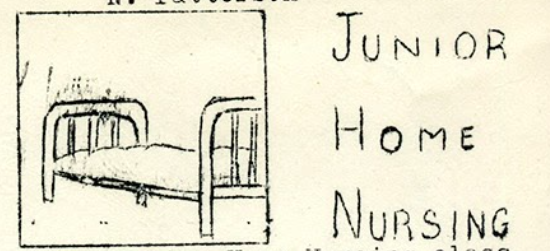

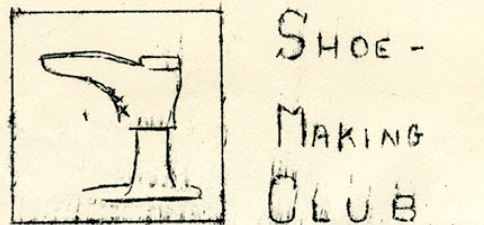
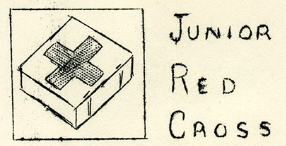
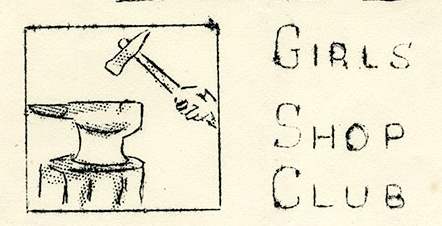
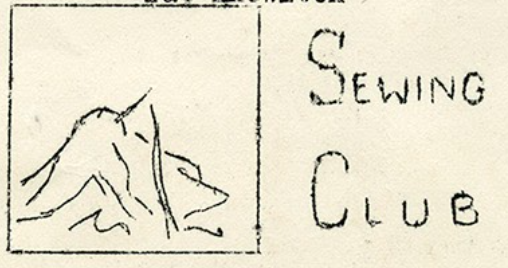
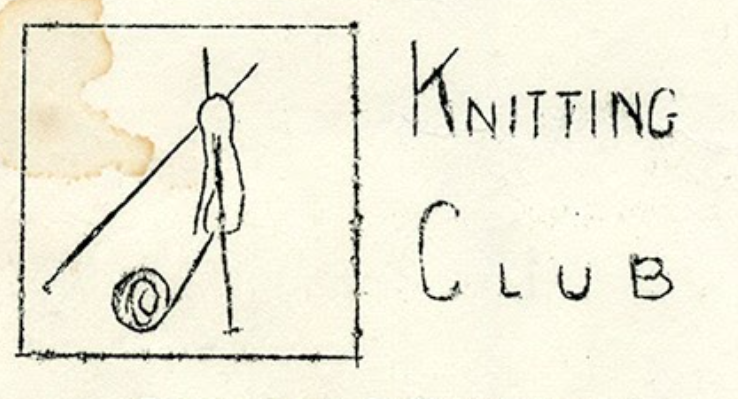
There were also non-athletic clubs in the Mission High School, such as the First Aid Club, whose focus was on learning the fundamental of emergency first aid. We can remark on the gender difference in this club as it was directed towards the girls only.[2] When we think of the historical context, we can hypothesize that they were getting practical training to become nurses during the war. According to the Red Cross, the woman’s roles are as follows “They drove ambulances, supported patients, and assisted staff in military hospitals. Courageous, strong, and perhaps ahead of their time, they carried with them the strength and good wishes of many women who could not leave home.” [3] Therefore, it could be stated that Mission High School created this club to help wounded Canadian soldiers overseas recover and fight again.
Another girl-only offering was the home nursing club for both Junior and Senior students. The primary tasks were learning how to make a bed, taking temperatures, and bathing patients.[4] We can see how the gender roles of the war affected which clubs the girls could join. The school wanted their teenagers to be ready and equipped after graduation to care for the wounded soldiers or become competent housemakers able to look after the needs of the family.
There was also the presence of a Red Cross Club whose goal was to fundraise towards the War Saving Stamps initiative.[5] We can clearly see how this club’s goal was to assist in aiding the war effort at the local level and by the extension our soldiers fighting overseas. Another activity was the Shoe Making club, whose goal was to learn the fundamentals of shoemaking and thus support the continuation of a necessary wartime industry.[6] We can see the direct correlation between the goal of the club to make shoes and the increase of shoe making during the war. In World War Two, it was a necessity to have durable equipment that was comfortable and practical. [7]
The Red Cross endeavours were also present in the community surrounding the school. As the local Fraser Valley newspaper highlights:
Mission Red Cross wish to thank all those who contributed towards this worthy cause heartedly. There are donations yet to come in, and to date, 2,494.15 has been collected for the Red Cross”[8]
Fraser Valley Record
The hope of the club at Mission High School was that its students would continue to support this important organization after graduation.
The Sewing and Knitting Club were two other ‘girls only’ clubs.[9] Their goal was to produce hand-made clothing. “Resources and raw materials for civilian clothing were limited during the war. Prices rose, and fashion staples such as silk were no longer available. Purchase tax and clothes rationing got introduced. But fashion survived and even flourished in wartime, often in unexpected ways.”[10] Therefore, we can see the need for students to get creative and be able to help make clothes with little resources on hand. Students were encouraged to learn how to make clothing when they were not able to purchase them.
We can clearly see how the clubs at the schools had clear gender differentiations. The boys were in sports allowing them to build up their endurance and speed, to be able to become soldiers and contribute to World War Two efforts. On the contrary, the girls who decided not to join the armed forces, were encouraged to play a supportive role by becoming nurses and developing homemaking and clothing skills to make their contribution to the war effort.
A number of newly graduated teenagers joined a branch off the armed forced, were deployed overseas, and some unfortunately became casualties, either through injury or loss of life. In the Fraser Valley record, we see that a 19-year-old Vancouver Boy was fighting overseas to help the World War Two efforts by killing the Nazis’ Junker. Although this is not a Mission Teenager, it was a feature in the Mission Newspaper, and we can assume that they must have been Mission BC soldiers fighting as well.
“Just 19 years old, during his second ops flight. Flt. Sgt. Ken Pulham of Vancouver blew a Nazi Junker 99 to bits as it braved his gun. He was one of the Thunderbird Squadron ships. As they approached the target, his bomb aimer. Terry Proudluck, of Kindersley Sask, also got in some telling burst at another enemy fighter.”[11]
0025 Fraser Valley Record Volume 31 No. 30 1943-12-02
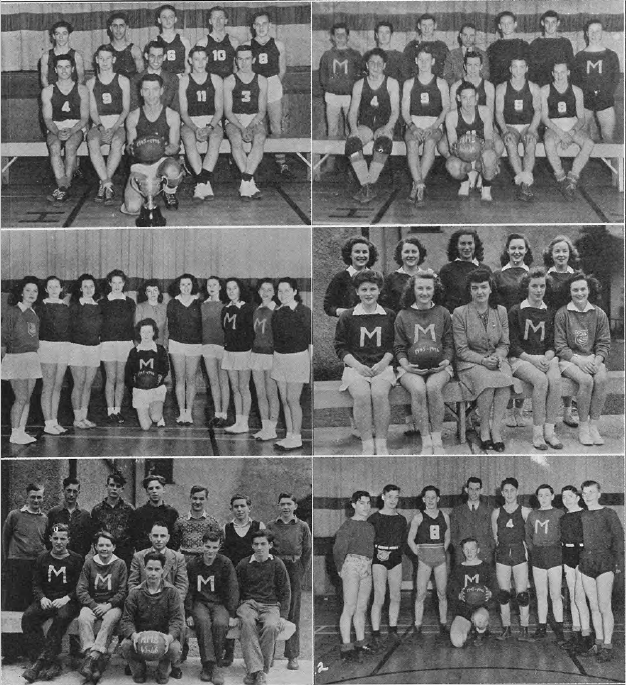
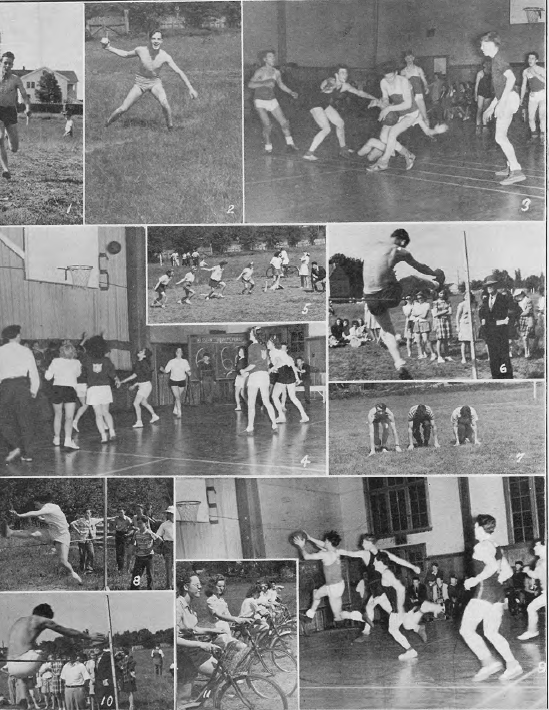
The images above show the sports that ran in the High School in 1945-1946. We can see from the images that many more boys than girls participated in the sports. We can assume that it can be due to the school wanting to prepare the boys for the battlefield, as they need to be physically strong, and the girls for other armed forces sectors.
There was also the fashion show in the year after the war, which involved both girls and boys. We can see how the clubs that ran in the school were a diverse offering, as shown in the two pictures below.
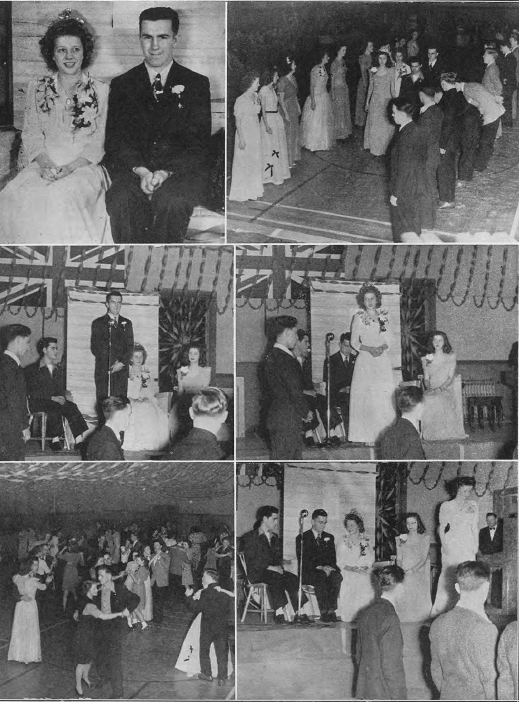
1945-1946 Mission High School Year Book
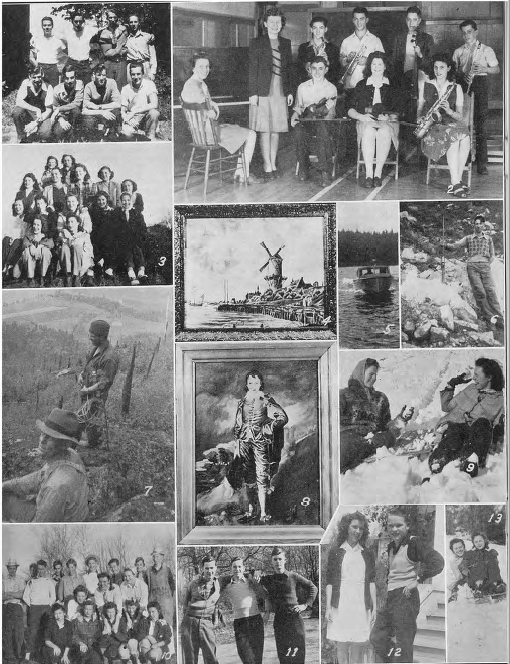
Sources
[1] Peter Albee fonds Newsletters, News and Views, December 3rd, 1940. accessed March 16, 2023
[2] Peter Albee fonds Newsletters, News and Views, Volume V, No. 3. accessed March 16, 2023
[3]“History of Women in the Red Cross,” Canadian Red Cross, accessed, March 16, 2023. https://www.redcross.ca/donate/other-ways-to-donate/join-the-tiffany-circle/history-of-women-in-the-red-cross#:~:text=World%20War%20II%20%26%20After&text=They%20drove%20ambulances%2C%20supported%20patients,who%20could%20not%20leave%20home
[4] Peter Albee fonds Newsletters, News and Views, Volume V, No. 3. accessed March 16, 2023
[5] Peter Albee fonds Newsletters, News and Views, Volume V, No. 2. accessed March 16, 2023.
[6] Peter Albee fonds Newsletters, News and Views, Volume V, No. 2. accessed March 16, 2023.
[7] “History- The Military affect on the shoe industry,” accessed March 16, 2023. https://shoegazing.com/2021/06/01/history-the-militarys-affect-on-the-shoe-industry/
[8] 0025 Fraser Valley Record Volume 31 No. 30 1939-11-30
[9] Peter Albee fonds Newsletters, News and Views, Volume V, No. 2. accessed March 16, 2023.
[10] “How Clothing Rational Affected Fashion in The Second World War,” IWM, accessed March 16, 2023, https://www.iwm.org.uk/history/how-clothes-rationing-affected-fashion-in-the-second-world-war#:~:text=War%20Didn’t%20Mean%20the%20End%20of%20Fashion&text=Resources%20and%20raw%20materials%20for,wartime%2C%20often%20in%20unexpected%20ways.
[11] 0025 Fraser Valley Record Volume 31 No. 30 1943-12-02